Cameroon: Six things to know about the humanitarian crisis
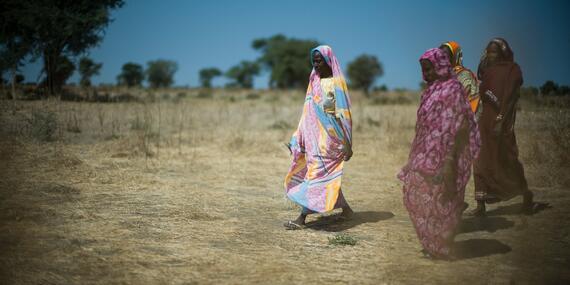
Cameroon is affected by three complex crises: the Lake Chad basin conflict, the North-West and South-West (NWSW) crisis, and the Central African Republic (CAR) refugee crisis. However, in recent years, much-needed funding for the humanitarian response in Cameroon has barely reached half of the required amount.
Here are six things you need to know about this often-forgotten crisis.
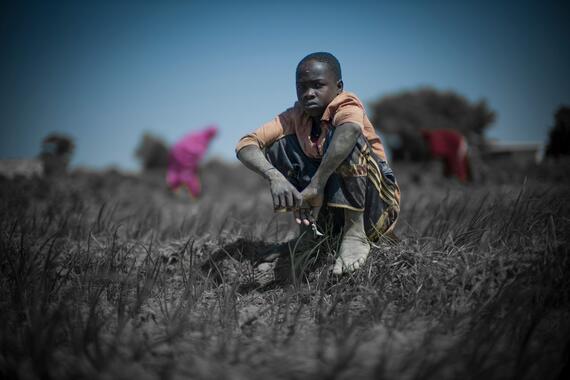
One in six people in Cameroon needs humanitarian assistance
This year, an estimated 4.7 million people need humanitarian assistance and protection in Cameroon — a 20 per cent increase since 2022.
The severity and scope of humanitarian needs continue to grow due to the combined impact of conflict, insecurity, and climate-related events, such as floods and droughts. Humanitarian needs are compounded by poverty, poor infrastructure, limited access to basic social services, and epidemics, such as cholera and measles. All of these challenges affect people’s long-term recovery.
As of May 2023, Cameroon’s Far North Region hosted 385,000 internally displaced people (IDPs), more than 115,000 Nigerian refugees and 350,000 CAR refugees.
Just one of those people is 10-year-old Garba, displaced from Chika village, in the Far North Region. He explains: “I saw many people coming into my village one night, masked and armed. They kidnapped my sister and seven other girls.”
Garba fled to Makary, in the Logone Birni Division, and is waiting for his sisters to return. He no longer attends school, as his family cannot afford to pay for his education. Instead, he helps his mother with farming.
A humanitarian organization helped Garba’s mother with seeds and fertilizers, enabling her to cultivate a field generously provided by a member of the host community.
The prolonged nature of the crises, new or repeated displacement, and insufficient humanitarian assistance and funding are reducing the affected population’s already limited resilience. This increases negative coping mechanisms, including child labour, child marriage and survival sex.
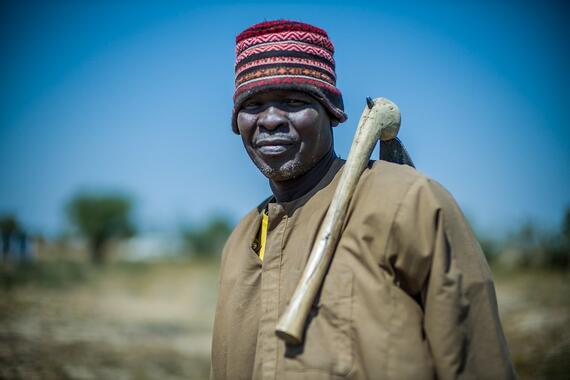
Millions of people are food insecure due to armed violence, natural disasters and rising food prices
This year, more than 3 million people face acute food insecurity in Cameroon.
Continuous insecurity in the NWSW Regions; the conflict; increased tensions over natural resources, such as water and pasture; and floods in the Far North are severely affecting food security, leading to population displacements and the deterioration of the economy.
Food insecurity is also exacerbated by the war in Ukraine, which has led to an increase in the prices of basic commodities, particularly wheat-based products.
The projected number of people in acute food insecurity is expected to increase by 45 per cent compared to the same period last year.
Ali Mohammed, 70, has witnessed people arriving in Makary to escape the Lake Chad basin conflict. He is hosting 15 displaced people who are unrelated to him.
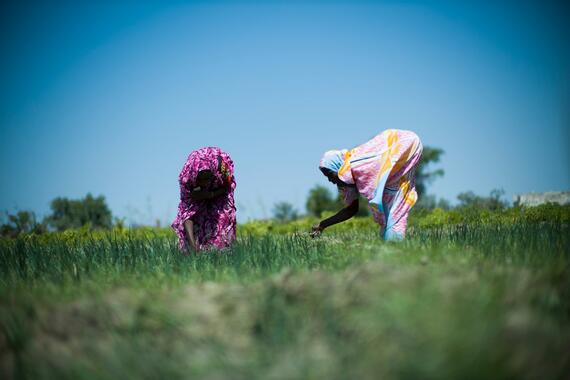
“I have lost many of my family and friends”
Humanitarian partners gave Ali seeds and fertilizers, and they drilled a water borehole to ensure he could cultivate and irrigate his fields. He can now provide for his family and the displaced people he welcomed into his home.
Moushara, 50, and her 12 children are also hosted by Makary’s local community. They fled their village close to Blangoua locality, at the border with Chad, following an attack by non-State armed groups (NSAGs), during which many people in their village were killed.
“I have lost many of my family and friends,” she said.
Because of the insecurity, Moushara does not want to return to her village; she prefers to stay in Makary. She benefited from an income-generating project implemented by a humanitarian partner in the region. As a result, she can now provide for her family.
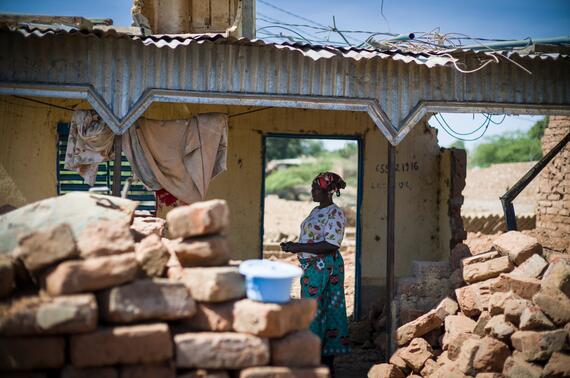
People are struggling to survive recurring floods and droughts
Cameroon is exposed to climatic hazards, such as low or high rainfall, which causes droughts, floods and landslides. Human-induced deforestation and degradation threaten the existence of the country’s vast and extensive forests, the survival of natural ecosystems and the livelihood of forest dwellers.
Amina and her family have been displaced since October 2022 due to floods in Kousseri town, in the Far North Region. As her house was built close to the Logone River, it was destroyed by flooding during the rainy season.
“Everything was destroyed, the kitchen and other parts of the house,” she said.
Amina managed to save items from her retail shop and she is now rebuilding her house, hoping that she will not be affected by this year’s rainy season.
Amina is just one of more than 300,000 people affected by last year’s floods in the Far North Region. At least 23 people were killed and more than 113,000 displaced. The floods also destroyed an estimated 31,000 houses and 48,000 hectares and killed 6,700 animals.
Around 151 primary and secondary schools were flooded, and more than 200 water points and 2,620 latrines submerged. A dozen health facilities were also flooded and unable to function.
In March 2023, floods and mudslides from Mount Cameroon affected more than 3,000 people in the South-West Region’s Buea area, killing two people.
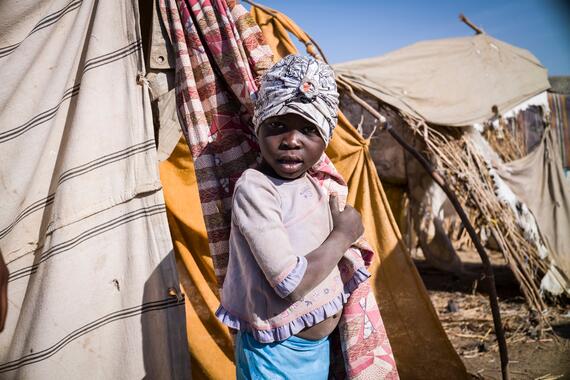
More than 2 million people are on the move in Cameroon as IDPs, returnees or refugees. Violence is the main driver of displacements
More than 2 million people are on the move in Cameroon as IDPs, returnees or refugees.
The number of displaced people has increased since 2020, with the largest displacement waves linked to the escalating armed conflict in the Lake Chad basin since 2014, violence in the NWSW Region since 2017, and the arrival of refugees from CAR in 2004 and 2014.
Armed violence in the Far North Region has uprooted 648,944 people, including 385,372 IDPs, 138,152 returnees and 125,420 Nigerian refugees who are settled temporarily in the region.
The sociopolitical crisis in the NWSW Regions is now entering its eighth year. This is causing massive population displacements; as of April 2023, the crisis had displaced more than 725,000 people within Cameroon and 87,000 to Nigeria, and almost 350,000 CAR refugees were reported in the East, Adamawa and North Regions — an increase of 15,000 people in just six months.
Birth rates are causing refugee numbers to increase, but new refugees continue to arrive due to insecurity and clashes in CAR.
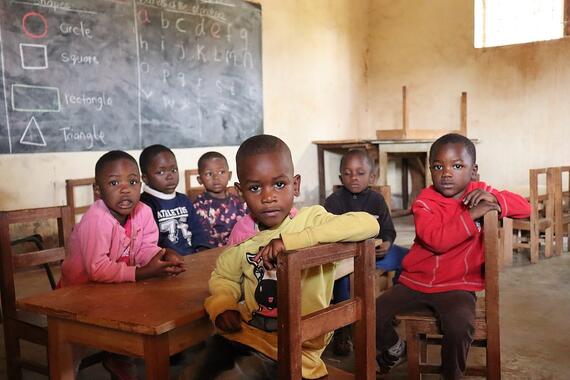
Children’s futures are at risk
NSAGs have banned governmental education in the NWSW Regions since 2017. Only 9 per cent of internally displaced children attended school in the two regions in 2022 due to insecurity, long distances between home and school, and school closures. Moreover, only 46 per cent of schools were operational in those regions in 2022. In many localities affected by violence in the NWSW Regions, only community schools are allowed to operate.
Attending school in the NWSW remains dangerous for children and teachers, as evidenced by the continual violent attacks on education since 2017. Certain areas are now more prone to kidnapping for ransom, with school children particularly at risk.
In the East and Adamawa Regions, CAR refugees struggle to access secondary education due to the long distances between refugee sites and schools.
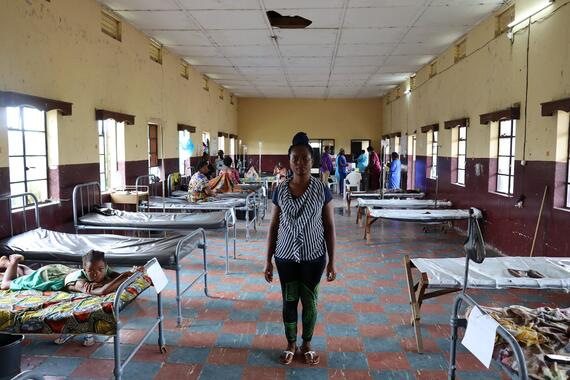
Cholera is affecting already vulnerable people
Cameroon is also affected by a cholera epidemic
Since October 2021, more than 17,000 cases and 384 deaths have been reported in the South, Littoral, South-West, Far North, East, North, West and Centre Regions.
The epidemic is now contained in some regions, but 17 people died between April and May 2023 due to a resurgence in the Centre Region.
Insecure areas in some of those regions are dealing with low vaccination coverage and struggling to access essential health care and qualified health personnel.
Text: Bibiane Mouangue; Photos: Liz Loh-Taylor, Bibiane Mouangue and Ariane Maixandeau; Edited by: Nina Doyle
